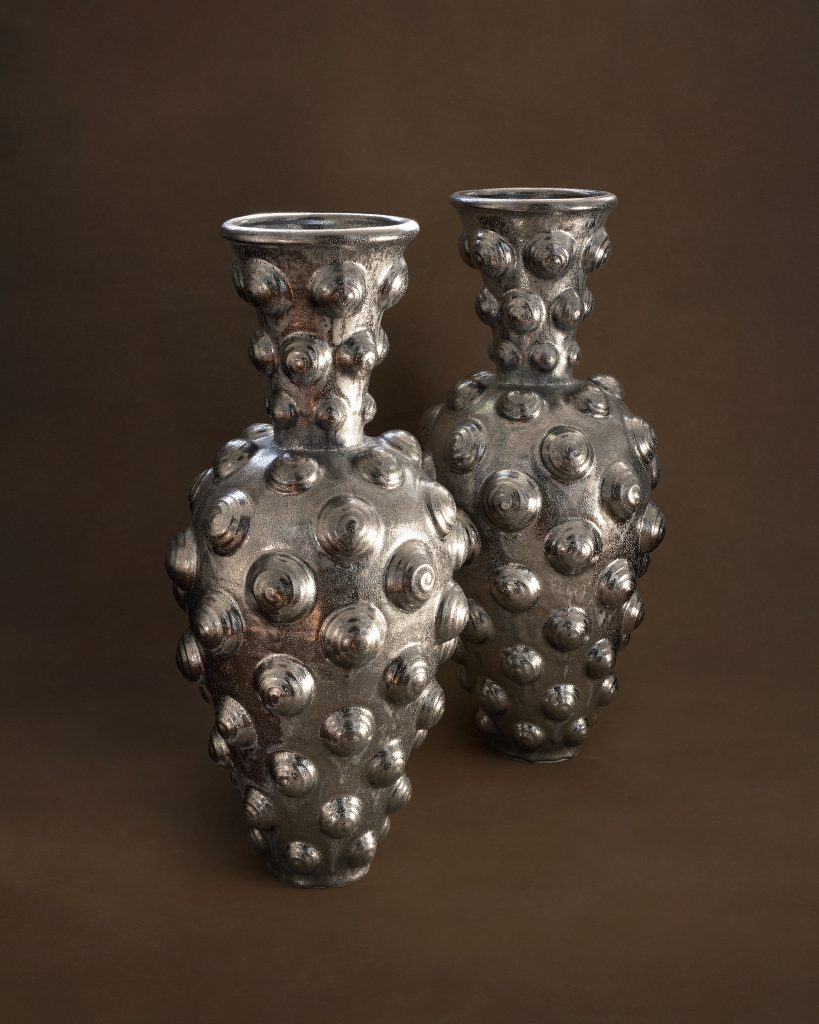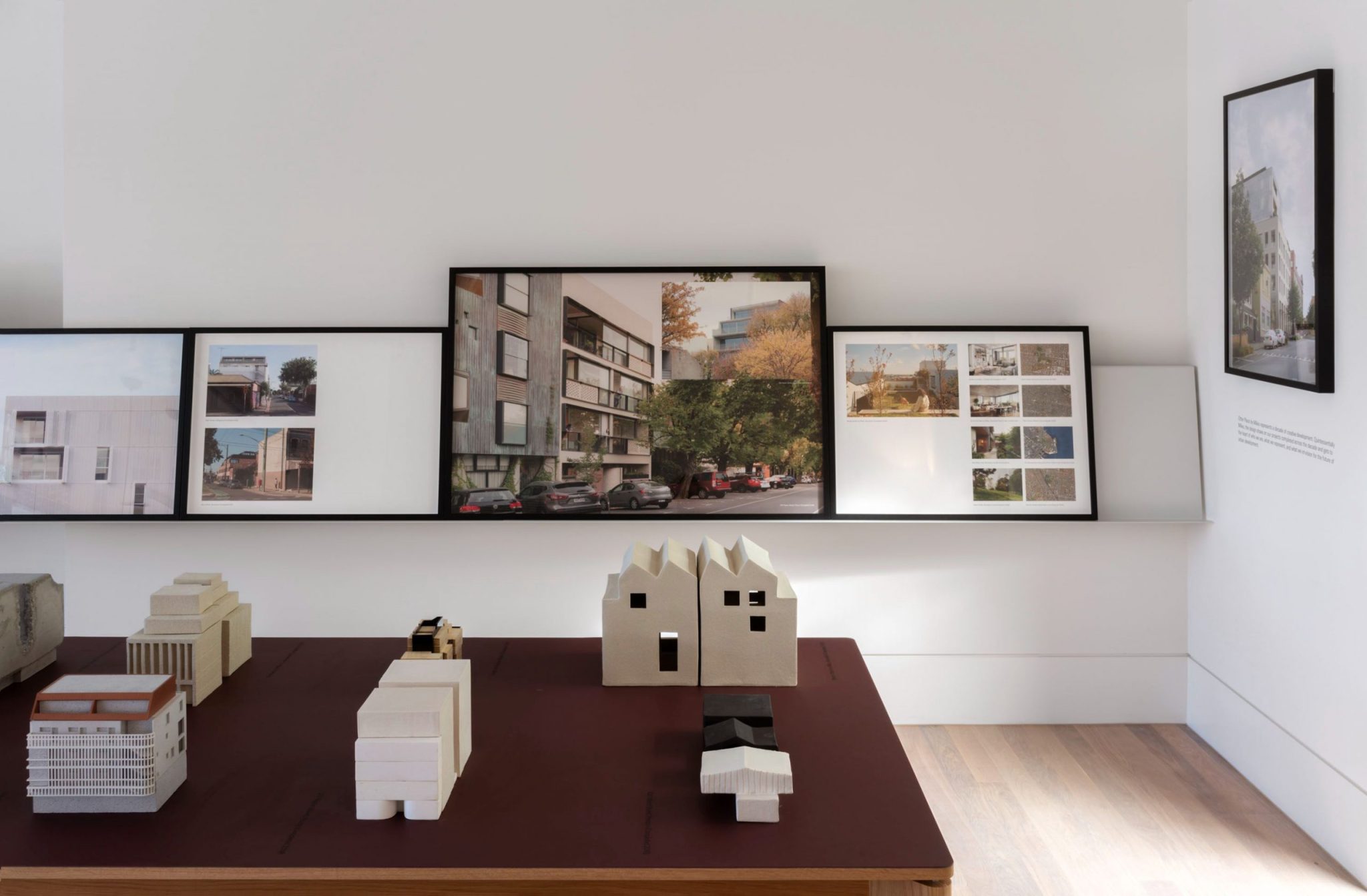
“Creating is a compulsion” – How ceramicist Nicolette Johnson transformed a creative outlet into a career
“Creating is a compulsion” – How ceramicist Nicolette Johnson transformed a creative outlet into a career
Share
The Brisbane-based ceramicist continues to make strides after her Mirror Pots exhibition featured in the NGV’s Focus commission at this year’s Melbourne Design Fair.
Johnson’s appearance at this year’s design fair was the first time her work had featured at a large-scale fair, and she couldn’t be more humbled.
‘I was very lucky to be approached by Simone LeAmon – she asked if I wanted to feature my work, and I said absolutely! It was incredible,” she says.

Johnson only delved into ceramics in 2015, however her impressive career is worthy of veteran status.
“It’s weird as I started eight years ago, but I feel like I’ve been doing this for a long time,” she laughs.
Johnson studied photography in university as a honours degree, majoring in photojournalism, yet as a creative outlet, something about photography didn’t feel right.

She experienced the existential crisis all-too-familiar for many graduates, and she struggled to envisage her degree translating into a career.
Her day-job as a wedding photographer proved to be unfulfilling and immensely anxiety-provoking, so she decided to take a beginner’s pottery class for reprieve and fun at Clayschool in Brisbane’s West End.
“I was immediately obsessed,” she reflects. Johnson increased her class attendance to three times a week, and advanced to packing kilns and making glazes.
Johnson was determined to transform what started as an outlet in which to channel frustrations and creative lethargy into a full-time career. She slowly progressed to selling her work, and then featuring in group and solo exhibitions, and the rest is history.

“I realised how amazing clay is as a creative medium, and I never felt that with photography. I didn’t realise there was something else out there for me, and I feel very lucky to have found ceramics,” she says.
From that first beginner’s class at the Clayschool, Johnson has received critical acclaim – her work is included in the permanent collections at The National Gallery, Brisbane’s Museum of Applied Arts and Sciences and the Griffith University Art Museum.
She was a finalist in this year’s Muswellbrook art prize, and is involved in Craft Victoria’s current Jugs exhibition, running until 24 June.
Johnson describes how she perceives ceramic making as instinctive and second-nature.
“Creating is almost a compulsion – I’m sure a lot of artists and designers believe that you have to get things out of your brain and into the world, and keep going until you can’t anymore!”

She collects inspiration from a myriad of sources such as painting, textiles, interiors, and Ancient Roman glazes. Johnson is also heavily inspired by nature and botanical forms.
She translates these influences into her distinctive style of ceramic making, and finds great satisfaction in witnessing a 2D idea morph into a 3D object.
Johnson’s ceramics clearly salute ancient pottery forms, yet her work also demonstrates a penchant for imbuing classical forms with elements of kookiness – experimenting with colour and obtuse shapes such as spirals flavour her work with a sense of futurism and surrealism.
“When creating, I like to imagine what pottery will look like in the future,” she says.
This endearing characteristic of Johnson’s work comes from striving towards a sense of timelessness, so her ceramics can neatly fit into a diverse range of time periods and environments.

“I love the idea that when you take a pot out of the kiln, the era is difficult to place – it could be ancient or it could be futuristic,” Johnson continues.
Johnson addresses how it is imperative to extend sensitivity and caution in ceramics making when deriving inspiration from pottery styles specific to certain cultures, as it is easy for a piece to lapse into a form of cultural appropriation.
There is currently a proliferation of Chinese, Japanese and North American First Nation’s ceramics not necessarily made by people from these backgrounds. And this crossover is not new, as Ancient Greek poetry styles were allegedly influenced by certain artistic motifs first noted in Asia.
“When you’re making ceramics today, it’s so easy to look back at these cultures and lean on what they’ve produced in terms of ceramics, however you have to be careful not to produce too literal of an interpretation if you’re not a person from that culture,” she says.
Johnson overcomes these anxieties by reimagining these forms into a new and contemporary context.

It is an exciting time for both professional and recreational ceramics – each week there seems to be a new “sip and sculpt” class, and many people are falling into ceramics as a calming and therapeutic hobby.
Johnson embraces this excitement, citing the benefits of anyone and everyone dabbling in ceramics, as it is one of the world’s oldest crafts, and the time and meticulous skill required in ceramics making deserves appreciation.
“It’s such a lovely thing for people to be introduced to,” says Johnson.
“Whether they take it up as a hobby or just do one class, there’s plenty of room for everyone – it’s a lovely community.”
Johnson promises novice ceramicists that the ceramics world is accepting, and she is also keen to debunk the assumption that the barrier to entry is high and inaccessible.

“Before I started classes, I was very intimidated and nervous, but potters and ceramicists are some of the most generous people, in terms of their knowledge and materials,” she finishes.
Johnson is continuing to splash head-first into the colourful and rewarding ceramics world, hoping to translate her work into large-scale sculptures. She also has a solo exhibition booked for early October at Paper Boat Press in Brisbane.
Photography supplied by Nicolette Johnson.
Check out Olana Janfa’s first time at Melbourne Design Fair.
You Might also Like




















